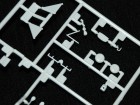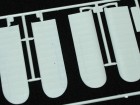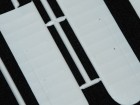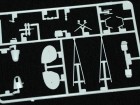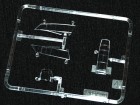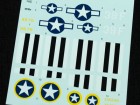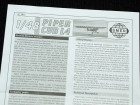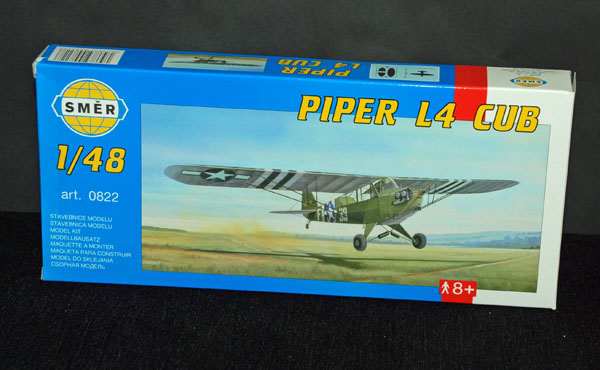
Ref: 0822
Price (for latest pricing info contact Tiger Hobbies)
Review by Geoff Coughlin (November 2014)
Our thanks to Tiger Hobbies for supplying our review sample. Get this kit that will be available in limited numbers here now at Tiger Hobbies
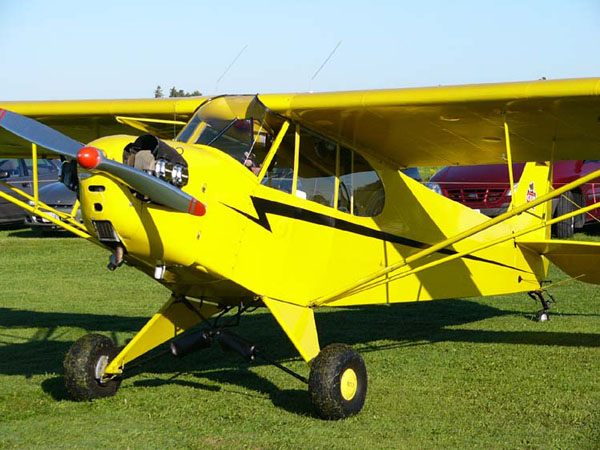
A little bit of background to the type
The Piper J-3 Cub is a small, simple, light aircraft that was built between 1937 and 1947 by Piper Aircraft. With tandem (fore and aft) seating, it was intended for flight training but became one of the most popular and best-known light aircraft of all time. The Cub’s simplicity, affordability and popularity invokes comparisons to the Ford Model T automobile.
The aircraft’s standard chrome yellow paint has come to be known as “Cub Yellow” or “Lock Haven Yellow”.
The Piper Cub quickly became a familiar sight. First Lady Eleanor Roosevelt took a flight in a J-3 Cub, posing for a series of publicity photos to help promote the CPTP. Newsreels and newspapers of the era often featured images of wartime leaders, such as Generals Dwight Eisenhower, George Patton and George Marshall, flying around European battlefields in Piper Cubs. Civilian-owned Cubs joined the war effort as part of the newly formed Civil Air Patrol (CAP), patrolling the Eastern Seaboard and Gulf Coast in a constant search for German U-boats and survivors of U-boat attacks.
Piper developed a military variant (“All we had to do,” Bill Jr. is quoted as saying, “was paint the Cub olive drab to produce a military airplane”),[5] variously designated as the O-59 (1941), L-4 (after April 1942), and NE (U.S. Navy). The L-4 Grasshopper was mechanically identical to the J-3 civilian Cub, but was distinguishable by the use of a Plexiglas greenhouse skylight and rear windows for improved visibility, much like the Taylorcraft L-2 and Aeronca L-3 also in use with the US armed forces. Carrying a single pilot and no passenger, the L-4 had a top speed of 85 mph (137 km/h), a cruise speed of 75 mph (121 km/h), a service ceiling of 12,000 ft (3,658 m), a stall speed of 38 mph (61 km/h), an endurance of three hours and a range of 225 mi (362 km). 5,413 L-4s were produced for U.S. forces, including 250 built for the U.S. Navy under contract as the NE-1 and NE-2.
All L-4 models, as well as similar, tandem-cockpit accommodation aircraft from Aeronca and Taylorcraft, were collectively nicknamed “Grasshoppers”, though the L-4 was almost universally referred to by its civilian designation of Cub. The L-4 was used extensively in World War II for reconnaissance, transporting supplies, artillery spotting duties, and medical evacuation of wounded soldiers. During the Allied invasion of France in June 1944, the L-4’s slow cruising speed and low-level manoeuvrability — alongside examples of the Auster AOP aircraft occasionally used by the British Army and other Commonwealth forces for the same purposes — made it an ideal observation platform for spotting hidden German tanks, Sturmgeschütz and Jagdpanzer tank destroyers waiting in ambush in the hedge rowed Bocage country south of the invasion beaches. For these operations the pilot generally carried both an observer/radio operator and a 25-pound communications radio, a load that often exceeded the plane’s specified weight capacity. After the Allied breakout in France, L-4s were also sometimes equipped with improvised racks, usually in pairs or quartets, of infantry bazookas for ground attack against German armored units. The most famous of these L-4 ground attack planes was Rosie the Rocketeer, piloted by Maj. Charles “Bazooka Charlie” Carpenter, whose six bazooka rocket launchers were credited with eliminating six enemy tanks and several armored cars during its wartime service, especially during the Battle of Arracourt.
After the war, many L-4s were sold as surplus, but a considerable number were retained in service. L-4s sold as surplus in the U.S. were re-designated as J-3s, but often retained their wartime glazing and paint.
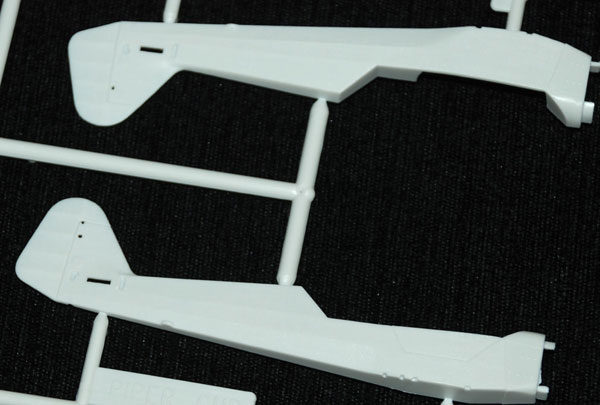
The SMER Kit
It’s great to see any kit of the famous Piper Cub L-4, not sure if this is a new release or not, but it looks quite impressive given that the real aircraft is very simple in design.
So what’s this kit like?
Well, for a start it comes in a great strong box, so the contents are unlikely to get damaged
Inside, the light grey sprues offer parts that have very little excess flash plastic and well moulded items – check out the fine fabric texture on the wing surfaces for example – probably hard to see in the photos but it’s there.
There aren’t really any panel lines to speak of on the real aircraft but what moulded detail there is looks quite fine and restrained. The shape of parts looks good and true to the original design. I’m looking forward to building this one very soon to see how it fits together – the first SMER kit build we have at SMN. I would like to build more, so we’ll see how this one goes and select another after that – do let me know if you have any special requests or ideas on this front.
The kit as supplied looks pretty authentic for a wartime L-4 Cub – probably a first in this scale.
Cockpit
The interior is very sparse and so some basic scratch-building will be needed to enhance the interior. I’m looking forward to that – a chance to do some ‘real’ modelling for a change 
Wheels and undercarriage
The wheels and hub detail is fine – maybe just small flats to sand on to simulate weight sitting on the tyres.
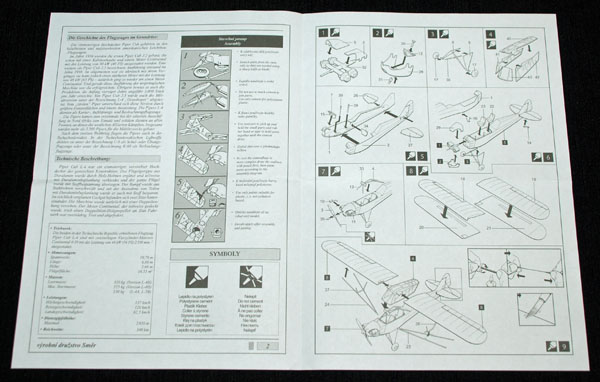
Other comments
- A dry-fit of the fuselage halves suggests quite a good fit and no distortion is apparent at this stage
- Clear parts are clear enough and will benefit from a polish or ‘dipping’ to really enhance their clarity but no blemishes or distortion is apparent
- Propeller shape looks okay too.
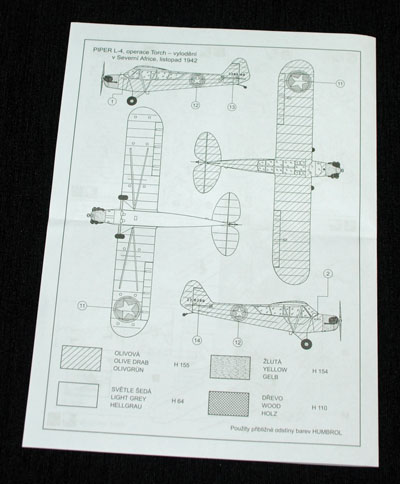
Decals
The small sheet looks accurate – quality looks to be very good with minimal carrier film. Colour saturation looks good and all decals are in register. Some stencil data is provided.
Instructions
This kit is very straightforward in terms of parts breakdown and the simple instruction sheet included explains clearly where parts should go. The back of the box is good for an all-colour guide to painting and decal placement.
To sum up
This isn’t an expensive boxing and you’ve got plenty of modelling ahead of you, not a state-of-the-art offering for sure, but who cares – I don’t! Well worth a look.
Geoff C.
